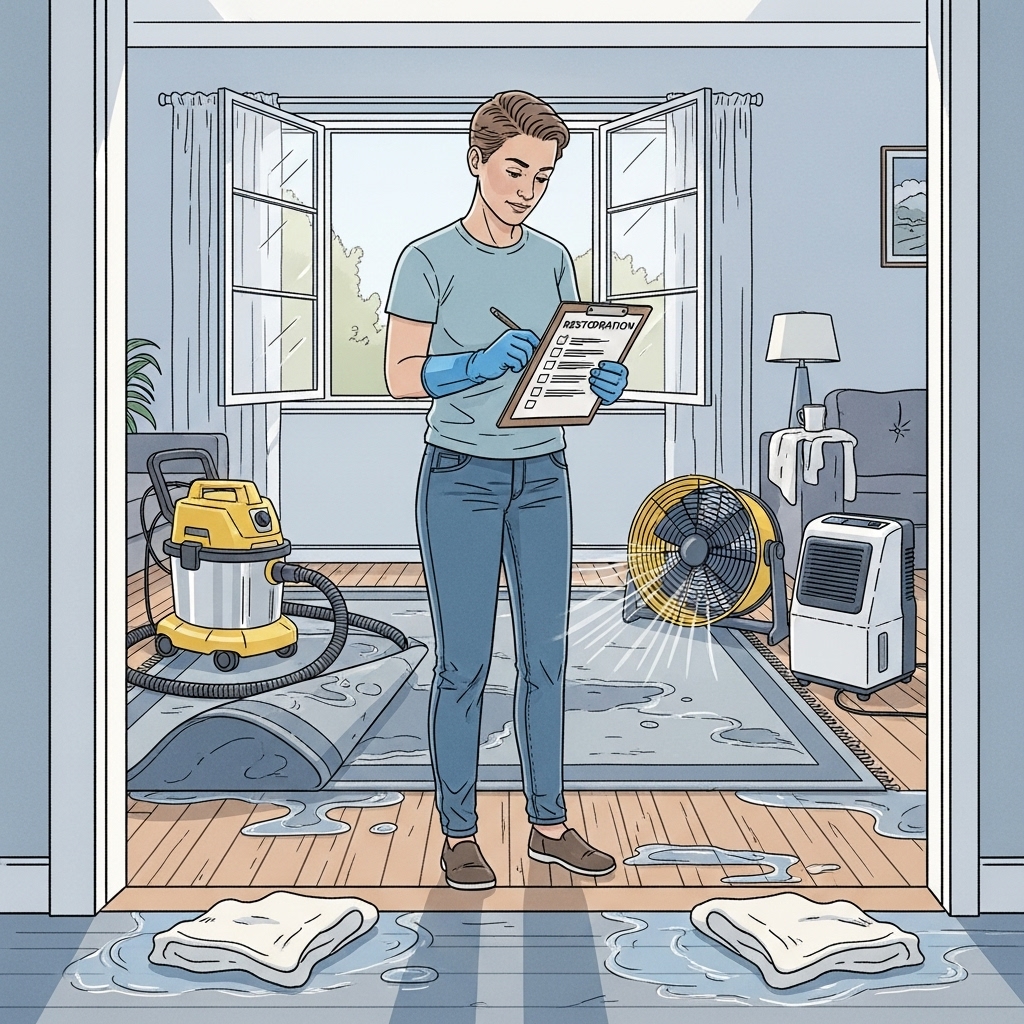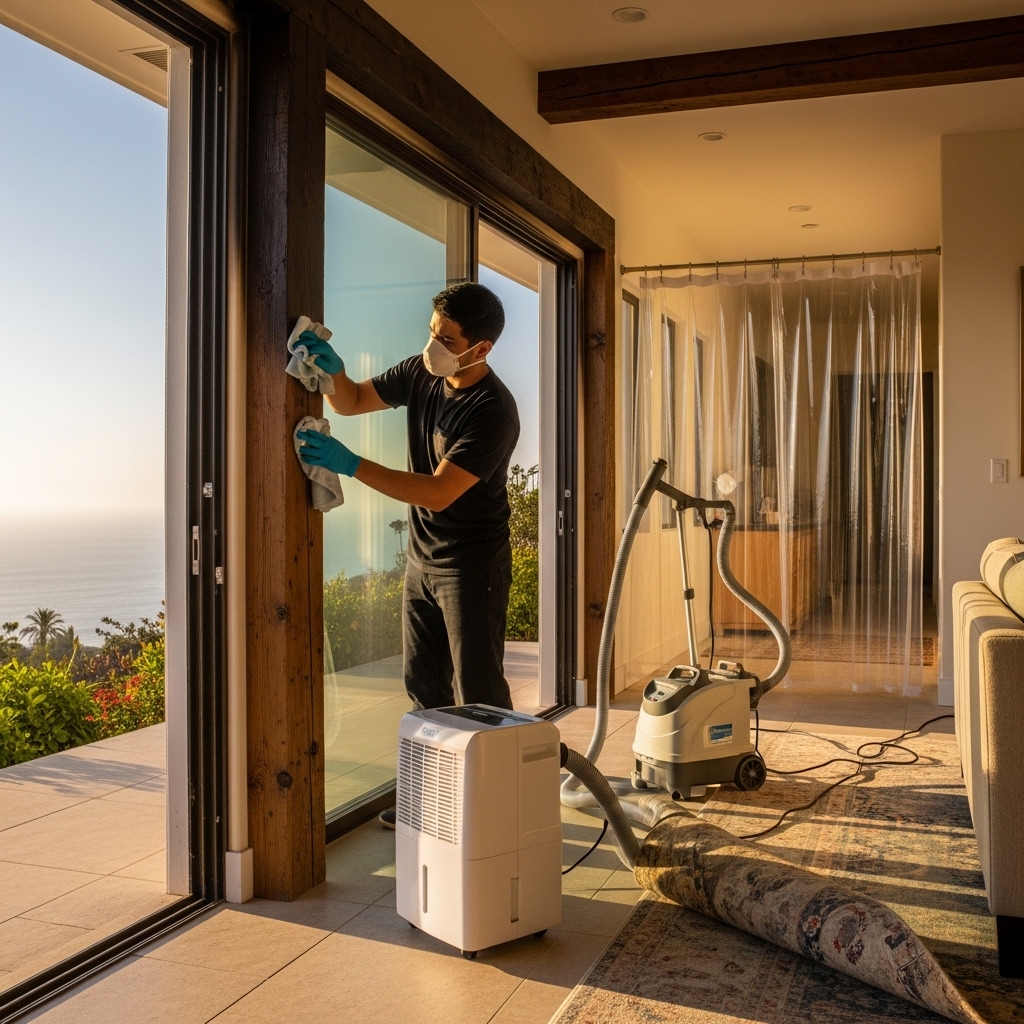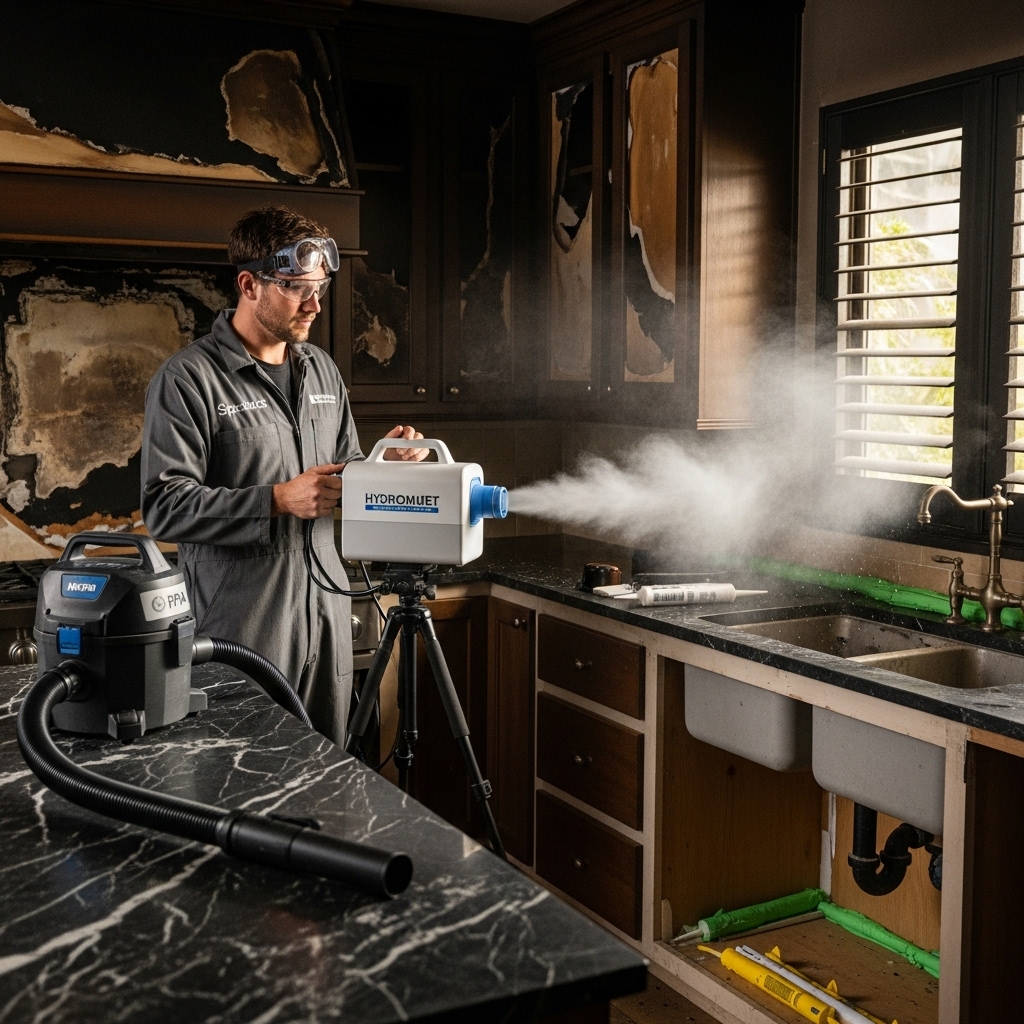When water intrudes into your Canoga Park home, the first minutes and hours matter most. A calm, organized plan prevents damage from spreading, protects your family, and speeds recovery. The checklist below distills industry best practices into practical steps any homeowner can follow. If you prefer a professional to take the lead from the outset, you can always call for expert water damage restoration to stabilize the situation and guide you through mitigation, drying, and cleanup.
Immediate Actions In The First 30 Minutes
- Stay safe. If electrical outlets, cords, or appliances are wet, shut off power to the affected circuits before entering.
- Stop the source. Turn off the nearest fixture shutoff or the main water supply. If the source is roof or window intrusion during a storm, capture flow with containers and protect belongings.
- Protect valuables. Move art, electronics, area rugs, and documents to a dry room.
- Photograph everything. Take wide shots to show context and close-ups to show specific damage. These images support insurance and help you track progress.
- Reduce spread. Place towels at doorways, and avoid walking through wet areas to keep contamination from traveling to clean rooms.
Stabilization In The First Few Hours
- Extract standing water with a wet/dry vacuum.
- Ventilate with open windows and fans when weather is mild and dry; in humid conditions, run air conditioning to reduce moisture.
- Lift furniture. Use blocks or foil under legs to prevent staining and wicking.
- Check ceilings below wet bathrooms or laundry rooms for sagging or staining; relieve bulges cautiously if safe.
- Start a log. Record times, actions taken, and any professional calls. A simple timeline keeps your response organized.
Drying And Dehumidification Checklist
- Set up air movers to create consistent airflow across wet surfaces, not just at them. Angled placement along walls is most effective.
- Deploy dehumidifiers matched to the size of the affected space and the moisture load. Empty tanks or route condensate to a drain.
- Isolate the zone. Hang plastic to contain the affected area and speed drying by reducing the volume of air to manage.
- Lift carpet edges to inspect padding. Remove and discard saturated padding if necessary, then float carpet with controlled airflow.
- Monitor progress. Use a moisture meter to compare affected materials with an unaffected room. Adjust equipment as readings trend.
Mold And Sanitation Considerations
Microbial growth can begin within 24 to 48 hours in a humid environment. Clean affected hard surfaces with appropriate solutions and wipe from clean to dirty areas. Porous materials like saturated drywall, insulation, and some textiles may not be salvageable if the water is contaminated. Always handle cleanup with gloves and consider respiratory protection when working in dusty or musty areas.
Odors often indicate remaining moisture. If musty smells persist despite solid airflow and humidity reduction, re-check concealed spaces such as under cabinets, behind baseboards, or inside wall cavities. Small weep holes at the base of drywall and targeted air injection can ventilate these spaces effectively.
What To Keep And What To Discard
- Keep non-porous items that can be thoroughly cleaned and dried, such as metal, glass, and finished wood.
- Evaluate engineered wood furniture for swelling or delamination; swollen particleboard often fails later and may be best discarded.
- Discard saturated insulation, heavily soiled carpet padding, and any porous materials touched by contaminated water.
- Launder washable textiles promptly on a hot cycle if compatible with the fabric.
Insurance Communication Checklist
- Notify your insurer as soon as practicable and provide the basic facts: when, where, cause if known, and immediate mitigation steps.
- Share photos and videos along with a simple room-by-room list of affected items.
- Keep receipts and notes on any equipment rentals or professional services used.
- Ask your adjuster about documentation preferences. Moisture logs, equipment placement diagrams, and daily progress notes can accelerate approvals.
Mid-Project Progress Check
At the halfway point of drying, review your measurements. If moisture readings are not decreasing, change the plan: add dehumidification, adjust air mover placement, or expand containment. Verify that the source of water is fully resolved; hidden drips can undermine days of good work. When in doubt, bring in a local specialist for a targeted assessment. Skilled teams experienced in water damage restoration can identify concealed moisture with thermal imaging and recommend precise adjustments that keep the project on schedule.
Common Mistakes To Avoid
- Rebuilding too soon. Do not reinstall baseboards or close walls until moisture reaches target levels comparable to unaffected areas.
- Overlooking adjacent rooms. Water travels under walls and through gaps; always check closets, hallways, and under stairs.
- Ignoring HVAC. Change filters after dusty work and consider duct inspection if significant debris was created.
- Underestimating humidity. Air movement without dehumidification can relocate moisture rather than removing it.
Frequently Asked Questions
Q: How quickly should I act after discovering water? A: Immediately, once safety is confirmed. Early extraction and airflow reduce the scope of damage and can save materials.
Q: Can I dry hardwood floors without removing them? A: Often yes, with drying mats and controlled dehumidification, assuming the flooring has not buckled or lost adhesion.
Q: Do I need to test for mold after drying? A: Not always. If the water category was clean, drying was prompt, and odors are gone, additional testing may not be necessary. Persistent odor or visible growth warrants further evaluation.
Q: How long does drying take? A: Many residential projects require three to five days, but timelines vary with material types, the amount of water, and weather conditions.
Need A Hand Getting It Done Right?
You do not have to manage a water emergency alone. If you want experienced help from inspection through final moisture verification, schedule professional water damage restoration and get your Canoga Park home back to normal with confidence and care.


